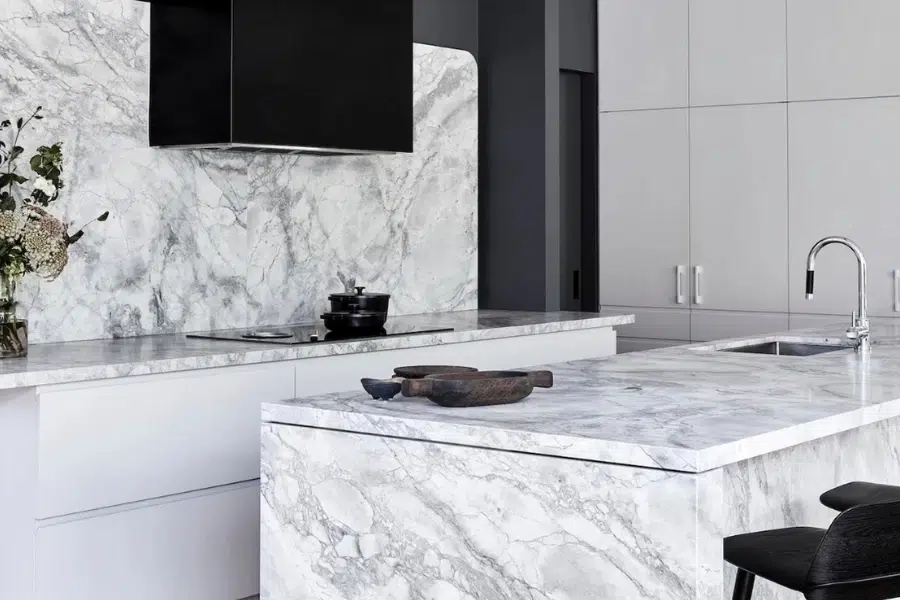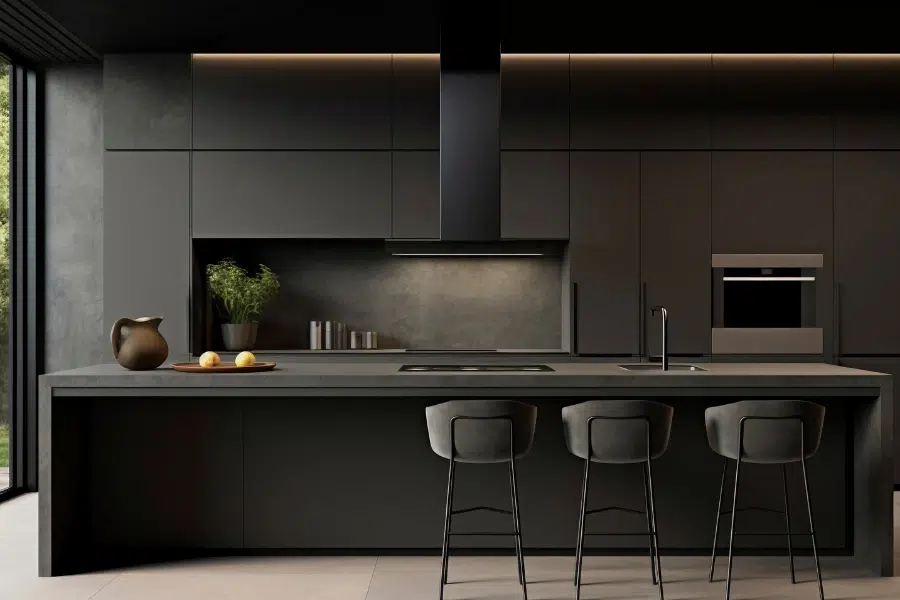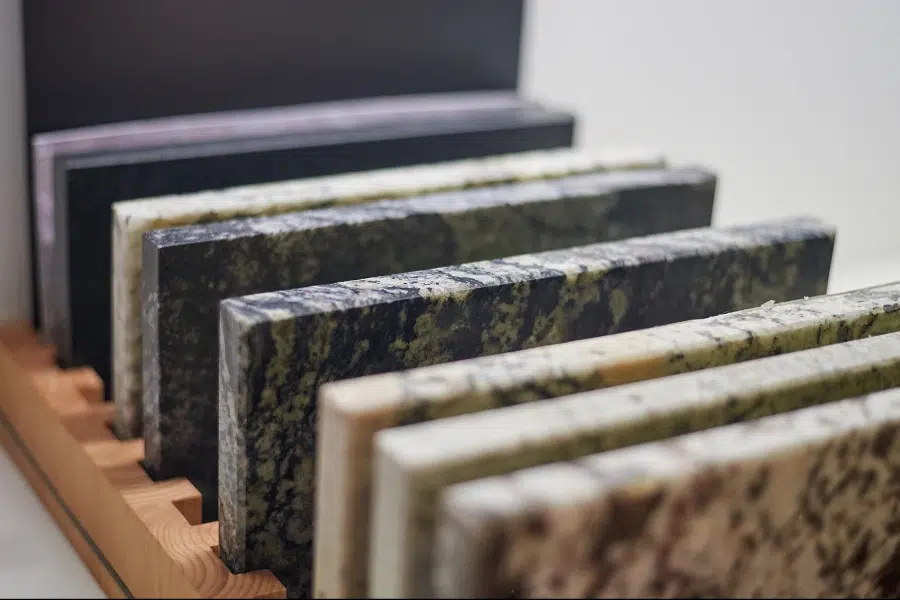What Are the Best Natural Stones for Maximizing Natural Light?
Top Natural Stones for Reflecting and Amplifying Light
Marble
Marble is one of the top choices to reflect light into any interior space, due to its very reflective surface. Extremely well-known for its silky polish, marble amplifies light to make rooms much brighter and larger. White marble slabs are highly recognized by their pure, light-coloured surface that creates a very fine reflection of light, which gives serenity and openness.
Of all of the types of marble, Calacatta marble is considered luxurious, featuring a white base and dramatic grey veining that lends an air of sophistication while creating the impression of more light. Carrara marble has very slight grey veining off of a white background, providing a classic sense of elegance while still having the ability to reflect light.
This versatility of marble makes it very appropriate for any type of application, be it countertops, flooring, or wall cladding. Marble requires cleaning and periodic sealing to keep it shining and reflective. Added to your design will be not only more natural light, but marble will give an ageless style to your interiors.
Limestone
One can use limestone to maximize natural light indoors because of its light colour and reflective surface. Such natural stone, mostly occurring in subtle textures and tones that are rather neutral, will help brighten the room and give it an inviting feel. Light-coloured limestone surfaces reflect the natural light onto spaces, hence increasing the brightness and giving an open feel. Compared with some other stones, this matte finish of limestone reflects light more, creating the effect of a soft light, ideal for a more subtle and refined look.
Limestone can have different finishes, from smooth and polished surfaces to more textured ones; hence, it also can deviate from the design while still providing a feeling of light enhancement. This is mostly used for flooring, wall cladding, and even in exterior applications; this makes it versatile for both indoor and outdoor settings. Limestone requires periodical cleaning and sealing to maintain its ability to reflect and general appearance; otherwise, it becomes subject to stains and water damage. Add elegance and brightness to space by incorporating limestone into your design for light, refined interiors that maximize any available natural light.
onyx
Granite
Granite is an excellent material because of its extreme versatility and durability in use. It is a top natural stone that has outstanding light-reflecting properties. With its polished surface and natural speckled patterns, the stone makes a great material for maximising light in the living spaces of a house. Light shades of granite reflect light quite well, thus making any space look brighter and more open. The inherent durability of this stone and its resistance to wear and tear also mean that it is not easy to lose its attractive appearance over time.
Coming in a wide range of colours and patterns, granite may easily fit into any design style, bringing more light into the room. Be it used as countertops, floor tiles, or wall cladding, granite reflects light and can efficiently illuminate all the rooms to make them visually more spacious and warm. In addition, the high durability of granite against stains and scratches provides long life in hard-wearing areas subjected to everyday use.
This means that granite just needs minimal maintenance since it reflects light, among some other properties it has. Basic cleaning using a mild detergent or sealing occasionally keeps it shining and prevents it from staining. With granite incorporated into the features designed in your space, a mixture of durability and brightness works well for upgrading functions and aesthetics in your living environment.

Find the Perfect Stone for
Your Project
Maintenance Tips for Stone Surfaces to Maximize Light
The stone surfaces will reflect and amplify natural light if properly taken care of. Here are some of the important tips for maintaining your stone surfaces so that they remain as light-enhancing as possible:
Regular Cleaning
Daily cleaning is necessary to preserve the light reflectance on stone surfaces. Dust and dirt can be removed by wiping with a soft cloth or microfiber and a mild, pH-balanced cleaner. One should never use cleaners or tools with an abrasive nature since these will scratch the surface, resulting in reduced light reflection. Regular maintenance avoids grime build-up, which dulls the appearance of stone
Sealing
Next, applying a great sealant every 6–12 months will help protect the stone from stains and excess moisture that may affect its reflective qualities. Be sure to use a sealant compatible with your stone type and reapply based on wear. Sealing regularly will help keep your stone bright while still preserving the light-enhancing properties of the material.
Polishing
Periodic polishing returns stone surfaces to natural glow and light reflectance. To attain this benefit, some stones, such as marble and granite, may require professional polishing. For everyday maintenance, use polishing products specifically designed for your type of stone and follow the manufacturer’s directions to avoid damage.
Avoid Damage
You can protect your top natural stone from scratches and damage using coasters and protective pads. Clean spills immediately to avoid staining, particularly those that are acidic, as they can be very harsh to some stones. These precautions keep the stone surface in optimal condition so it will continue to reflect light for both beauty and functionality.
Conclusion
Visit our Sydney or Newcastle showroom to discover the perfect natural stone slabs for your space.
Frequently Asked Questions (FAQs)
Which stones then reflect light well?
How often should I clean my stone surfaces in order to keep them light reflective?
How often should one seal stone surfaces?
Can I polish stone surfaces myself, or do I need to call in a professional?
What should I do if my stone surface gets scratched or damaged?
Natural Stone Slab Supplier
Avant Stone brings together 20 years of stone industry experience to provide you with a range of globally sourced stone slabs including Marble slabs, Granite slabs and Quartzite Slabs.
We aim provide you quality service and distinctive stone products for your home or your commercial space. Avant Stone is the premier Stone Supplier of Granite, Quartzite and Marble slabs in Sydney.
Our showroom is located centrally in Greenacre, a mere 20 minutes from Sydney & Parramatta CBD.
Give us a call: 0298170037
Email us at: info@avantstone.com.au



